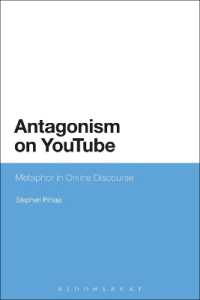- ホーム
- > 洋書
- > 英文書
- > Science / Mathematics
Full Description
The allure of the Lyapunov-based framework for mechanical system control de sign can most likely be assigned to the fact that Lyapunov function candi dates can often be crafted from physical insight into the mechanics of the system.







